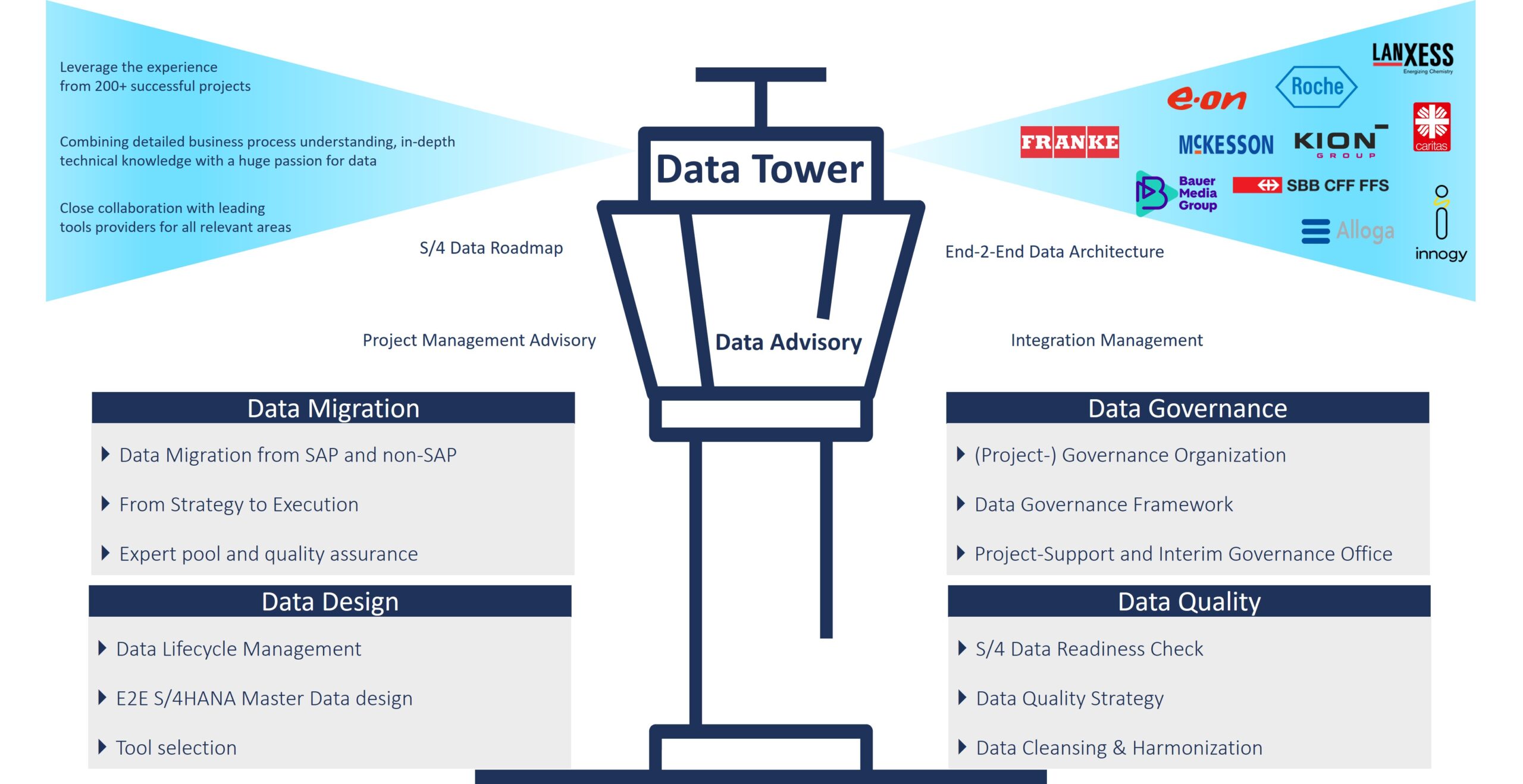
AI-Driven Application & Process Testing: Embracing Agentic Testing
Learn how Agentic AI enables digital transformation, delivering true hyperautomation.
In the ever-evolving landscape of Enterprise Resource Planning (ERP), SAP S/4HANA promises businesses a digital core that integrates processes, provides real-time insights, and ensures adaptability to future innovations. Nevertheless, the success of an S/4 transformation goes beyond the technological migration itself and requires meticulous attention to data, the core of any organization.
Companies often struggle with the high volumes of data that are dispersed across departments and systems. Thus, it is imperative to recognize the importance of a seamless transition during the S/4 initiative. Forward-thinking organizations are adopting a Data Tower approach—a dedicated structured global team designed to establish, steer, and ensure the optimization of global data management activities.
When looking at the setup of a Data Tower, it can be broken down into multiple different teams. Each team has their individual roles and responsibilities within the construct.

At the core of the Data Tower stands the Data Governance team. This team acts as the guardian of data integrity, setting policies, standards, and procedures to ensure that data is accurate, consistent, and aligned with organizational objectives. Also, Data Governance becomes the guiding force that navigates the complex terrain of data management and establishes the data governance framework.
Now, to orchestrate a seamless transition the Data Tower is equipped with Data Migration experts. This dedicated team oversees end-to-end operational migration activities, encompassing tasks such as data extraction, transformation, loading, and validation. Their role is fundamental in ensuring a smooth transition to S/4, minimizing downtime, and mitigating risks associated with data loss.
Additionally, to elevate the standards, the team of Data Quality Management plays a relevant role in the foundation of informed decision-making. This team focuses on profiling, cleansing, and enriching data to ensure it meets the highest standards possible. Their efforts guarantee that the S/4 system operates with accurate and reliable information, enhancing the overall efficiency of the organization.
Within this framework, the Data Design team, consisting of Data Experts and Data Clusters, is responsible for shaping and overseeing essential master data objects, such as customer, supplier, material, etc. Through the establishment and upkeep of a single source of truth, MDM guarantees uniformity throughout the organization, mitigating the risks of duplicates and inconsistencies that may arise during the S/4 transformation process.
Lastly, the Data Operations maintain data integrity and excellence, by serving as first and second levels of support. They are responsible for harmonizing requirements, driving issue resolution within their respective areas, and ensuring standardization and quality for the specific data elements.
Implementing a Data Tower setup is particularly beneficial for businesses and institutions dealing with substantial data volumes, seeking efficient, secure, and scalable solutions. Examples of such entities include large enterprises, healthcare organizations, and companies in manufacturing, logistics, and transportation. To maximize success in this competitive market, it is crucial to comprehend the unique data management needs, compliance requirements, and industry regulations specific to each organization.
Therefore, a thorough assessment of existing data structures should be conducted to identify areas for improvement and potential risks, and to determine the most appropriate data governance model for the company – data object governance, data domain governance, lifecycle governance, etc. Following this assessment, dedicated teams, such as the ones above mentioned, should be built, and trained to ensure they are equipped with the required skills and knowledge for their respective roles.
In the subsequent phases, within this Data Tower setup, it is imperative to foster collaboration between the involved teams and the other stakeholders within the S/4 program to create a cohesive and synchronized approach. In addition, it is essential to establish mechanisms for continuous improvement, incorporating feedback and lessons learned from each phase of the initiative.
In conclusion, by investing in a Data Tower setup, organizations can navigate the complexities of Data Management with confidence, ensuring a seamless transition to SAP S/4HANA, promoting efficiency and consistency, risk mitigation, and informed decision-making, which contributes to ongoing data excellence.

Learn how Agentic AI enables digital transformation, delivering true hyperautomation.

Reimagine resilience and proactively minimize supply chain risks

This article shall help you to understand how to optimize your inventory positions in a month – or even less.

Modern PLM systems empower businesses to achieve product excellence in fast-paced markets by enhancing collaboration, agility and innovation.
© Camelot Management Consultants, Part of Accenture
Camelot Management Consultants is the brand name through which the member firms Camelot Management Consultants GmbH, Camelot ITLab GmbH and their local subsidiaries operate and deliver their services.